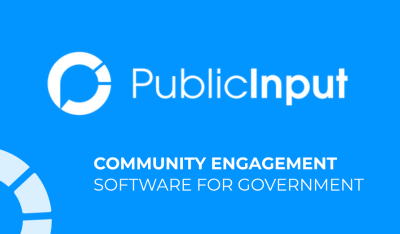How Question Type Impacts Engagement Outcomes
Engagement pages are a great tool to help agencies educate residents while soliciting public input. By visually showing options on a map or embedding an educational video in combination with dynamic engagement survey questions, we can ensure more meaningful feedback. This is especially true when it comes to initiatives such as building roads, improving parks, or completing other projects important to your community.
However, it is also important to use the effective survey question type.
When engaging the public, agencies might present a long list of options hoping the community will help them narrow those choices.
But too many options can sometimes overwhelm and confuse residents.
Scenario: “I need to figure out resident priorities in my community. Should I use Rank multiple options or Select multiple options question types?”
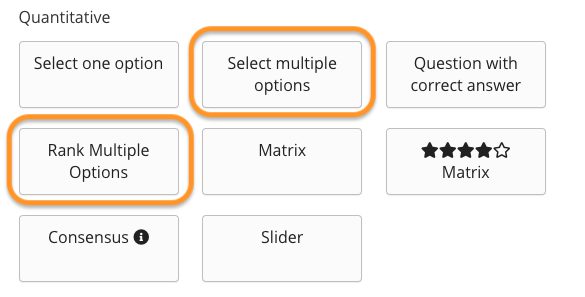
For example, if someone asked you, “Which colors are the BEST for rain boots?”
And the options you could choose from were:
- Arsenic
- Orange-red
- Sunset Orange
- Burnt Sienna
- Marigold
- Malachite
- Fuschia
- Inchworm Green
- United Nations Blue
- Wisteria
Would it be easier for you to rank these from most favorite to least favorite?
Or would you rather select your top three options?
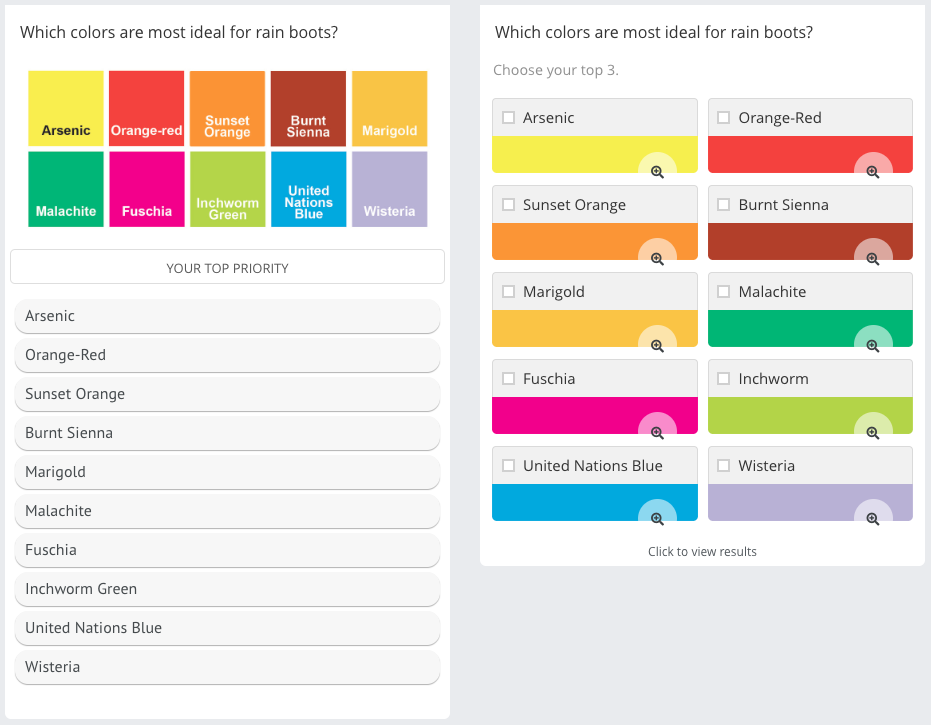
Ranking on the left, Select multiple options (with a set limit of 3 choices) on the right
For most people, picking three colors is easier than sorting an entire list by preference because it’s faster and more decisive.

Q: When it comes to getting meaningful data from your community, how can you present your options clearly and still get useful feedback?
A: By simplifying, and by considering the kind of data your agency needs.
Let’s take a closer look:
If you’re trying to narrow down several options to a few, the Select Multiple Options question is the way to go. At this point in the process, you’re probably just looking to identify the top three or four options.
Ranking is a better option when you’re working with less than four or five options, and you want to identify the most preferred option.
For example, let’s say you’re building a new park. You want to understand what features the community wants, but you don’t know how many features you can fund. So you come to the community with a list of 10 possible features and ask them to select their top five options.

Once your new park budget is finalized, you realize you can only fund three of the five options. So you go back to the community and ask them to rank their chosen options in order of preference. The three highest-ranked options will be funded.

It’s all about getting the right community engagement data
Select Multiple Options and Ranking Questions provide different types of data. That’s why it’s important to consider the information you want as you’re creating your engagement questions. When it comes to data, the more complex the equation, the more difficult it is to derive clear meaning.
In this case, Select Multiple Options is a simpler equation: More votes = more popular.
Ranking is more complex. Ranking measures both the number of votes for each option, and the priority level of each option. For example:
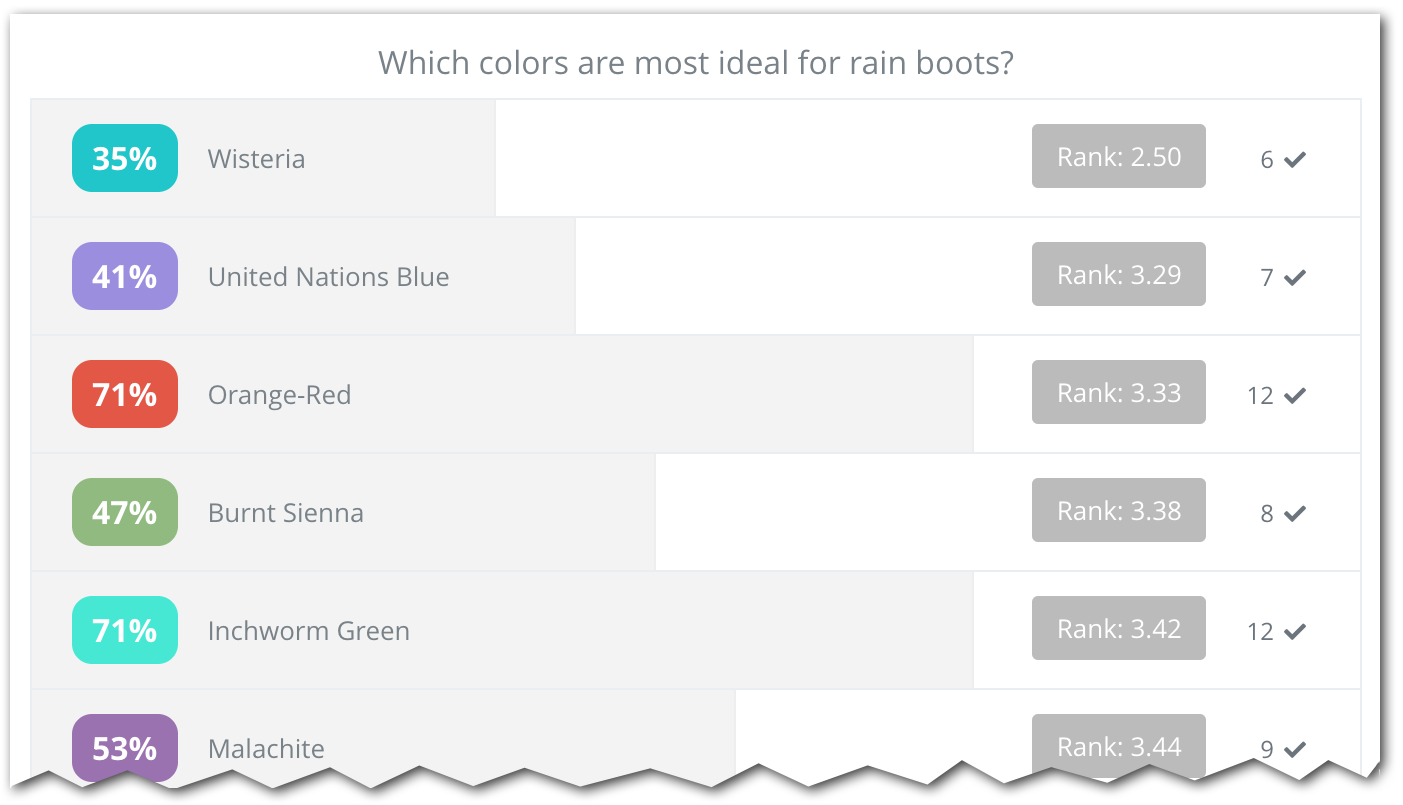
Here you can see that the top-ranked option (Wisteria) didn’t receive the most votes. It received six (or 35%). The second ranked option (UN Blue) received only seven votes (or 41%); the third ranked option (Orange-Red) received 12 (or 71%).
Why did options with fewer votes get ranked so highly? The two highest-ranked options got a high enough average ranking (ranked first or second more frequently) to offset the lower number of votes they received.
Even though fewer total participants overall chose these options, those who did felt very strongly that they should be highly ranked.
That’s why, if you’re trying to narrow down a list of options, ranking may not produce the simple data (options with the most votes) that you’re hoping for.
Ranking questions are most effective when you’ve already narrowed down a large list of options to a smaller list, and you’re trying to identify highest preference, not just most votes.
This one is Ranking options:
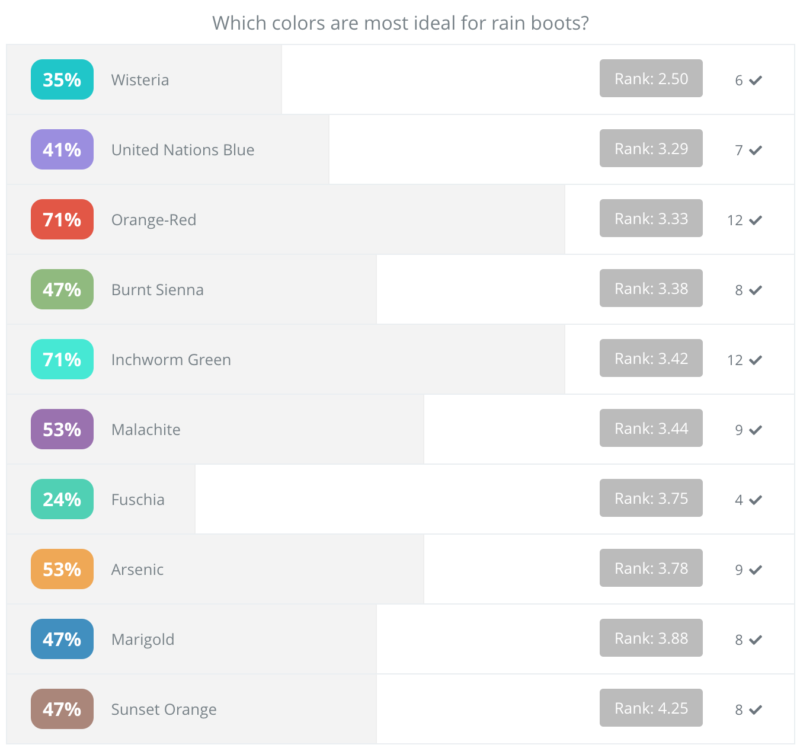
This one is Select multiple choice:
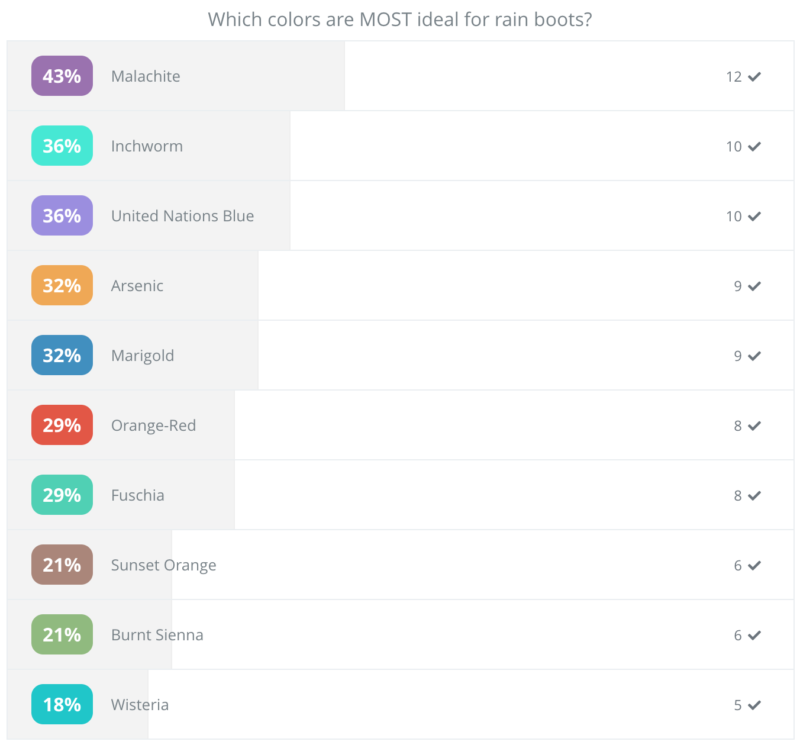
PublicInput Customer Pro Tip: If you’d like to compare survey responses using the Insight Builder tool, keep in mind that Select Multiple Options data is more straightforward than Ranking data.
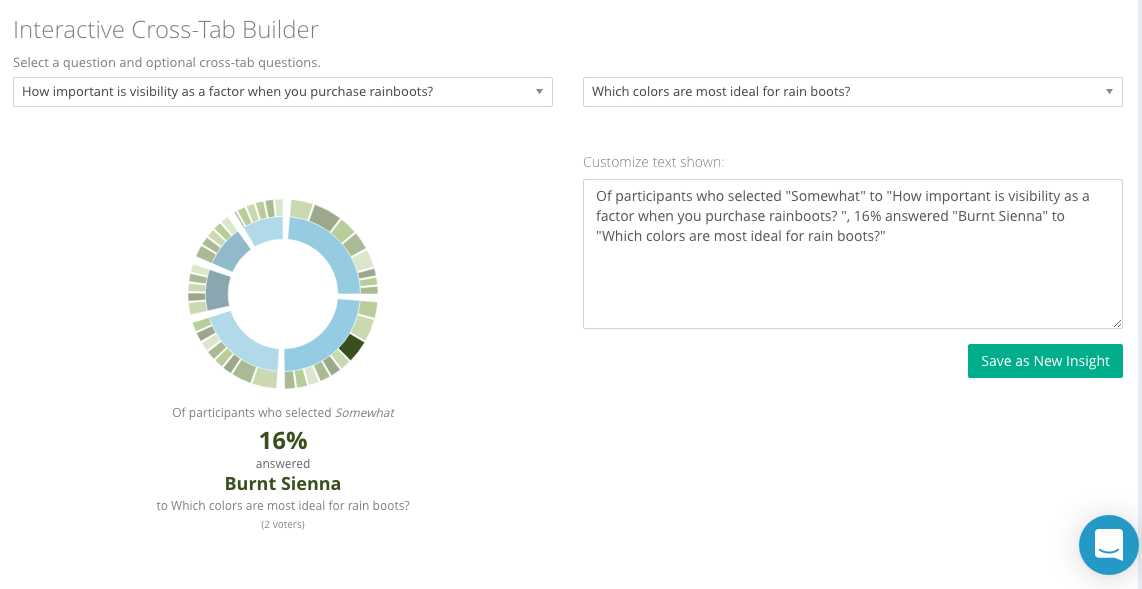
Think about how you’d like to present your findings to the public: if the data isn’t easy to decipher for you, it likely won’t be for your stakeholders, either.
Whether you choose to use Rank Multiple Options or Select Multiple Options questions, the most important tip we can give you is to think in reverse. Thinking about the results you hope to get after your community has participated will help you determine the most effective questions to ask.
What is the Best Way to Efficiently Increase Community Engagement Participation?
Q: Is there an efficient way to increase the number of residents I engage with and save time and effort?
A: Yes! Look to prior outreach efforts, and re-connect with residents who have already shown a willingness to engage. Make sure to keep it relevant by reaching residents who are affected by your current project (i.e. using geography or topic of interest as filters.)
PublicInput Customer Pro Tip:
Step 1: upload resident contacts into PI’s resident database.
Step 2: Re-engage residents who will be most affected by your project using PI’s audience segmentation tools!
PublicInput has everything you need to increase community engagement participation. Explore our platform to learn more.

